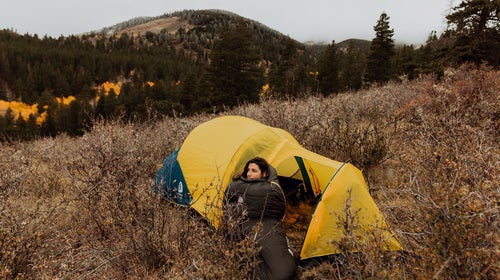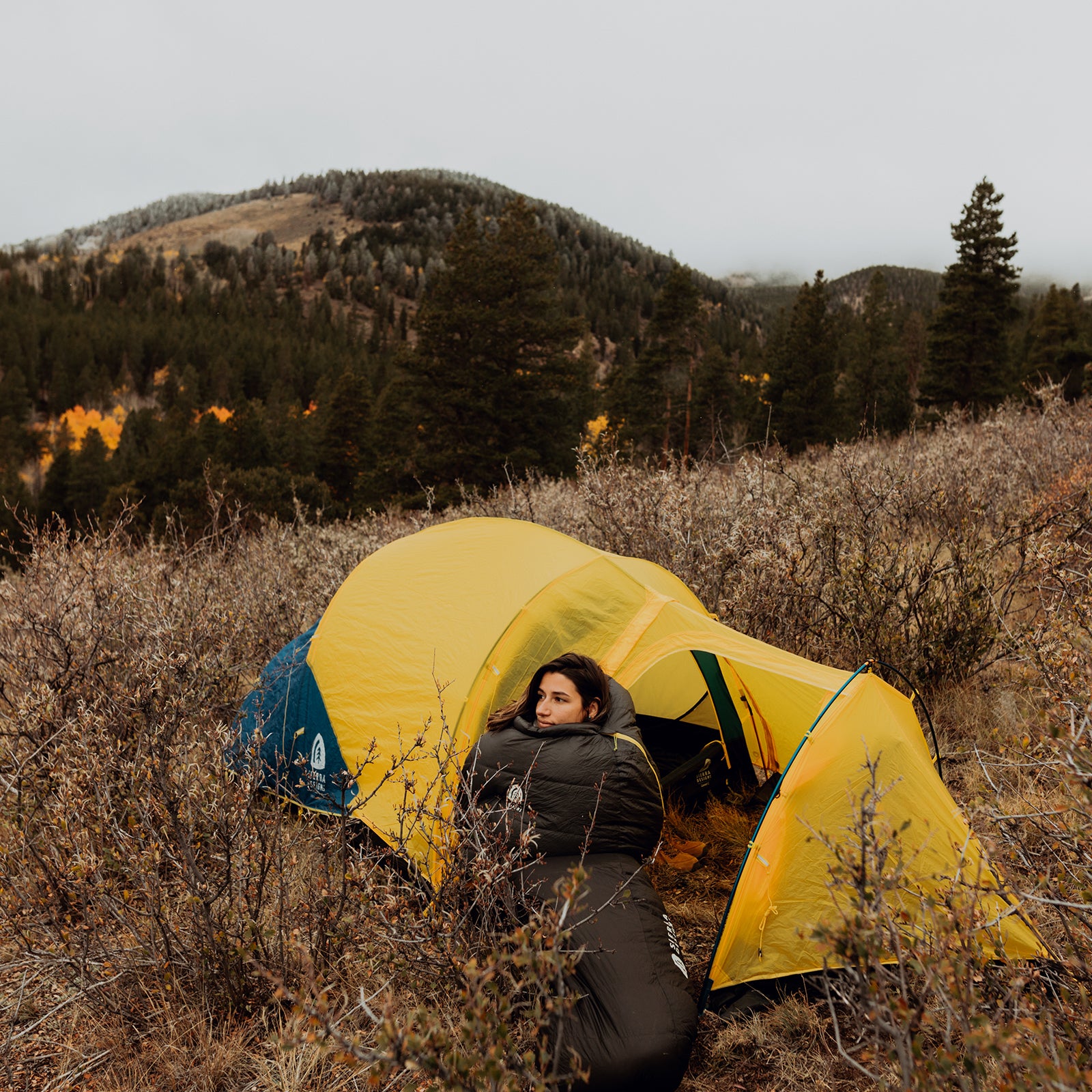Terry Breaux can trace the idea for the MSR Access, the first true four-season tent in both name and design, back to a day on Mount Rainier. In 2012, a couple��MSR employees were topping out on the 14,410-foot backdrop to the company’s Seattle-area headquarters. “And there was this guy camped on the summit in a Hubba Hubba,” recalls Breaux, MSR’s lead tent designer. “We knew he didn’t want to be up there in that tent.”
The is MSR’s most popular backpacking tent, but its all-mesh walls and spindly architecture make it ideal for lightweight, summer backpacking, not the high winds, cold temperatures, and potential snow of the alpine. On the other hand, on a weekend trip with a good forecast, that guy probably didn’t want to lug an eight-pound mountaineering tent to the top of Rainier. At the time, those were his only options.
“Six or seven years ago, almost��no one was applying the new technology and materials we were using in three-season backpacking tents to make four-season tents lighter,” Breaux says.
Today, material advances and the growing interest in backcountry skiing and snowshoeing are making the niche attractive.��In the past couple years, at least six new tents landed from as many different brands, claiming to be worthy for every season. They’re just tough enough for winter camping��and just light enough—typically under six pounds—for summer backpacking.��They’re true year-round tents.
But questions remain. Does anyone actually need one of these tents? Are they really a quiver killer? And what makes for the .�� To find out, I collated more than a decade of tent testing, including testing all six of these new tents in, well, all four seasons, talked to several of the designers, and interviewed three tent experts.
3-Season vs. 4-Season
Set up and ready for sleeping, the differences between a three- and four-season tent may not be obvious to the casual observer. But look closer��and the finer points start standing out.
Let’s begin��with architecture. Four-season tents use stiffer materials, and single poles create A-frame shapes to discourage snow loading, sagging, flapping, and bending in the wind. For three-season tents, designers cleverly use bows and bends in the minimalist pole structure to build more boxlike tent shapes that optimize the ratio of interior space to weight.
Four-season tents use nylon fabric instead of mesh to seal in warmth and prevent drafts and drifting snow from seeping into the interior cocoon. They also tend to have more guy-out points, higher-denier materials, and more venting options than their three-season brethren.
Do I Need a 4-Season Tent?
“[Four-season] tents are a unique option for someone with a range of pursuits in mind,” says Emma Hunter,��a gear specialist at Backcountry.com. “They’re adequate for summer or winter use, and they really prove their worth when you hit early season snowfall or mixed weather conditions at higher elevations. Plus, they’re a real value proposition for someone looking to purchase only one tent.” Buying one of these instead of both a three-season and a mountaineering tent could save upwards of $500��and a bit of room in the gear closet.��Even as a dedicated winter camping tent, four-seasons make a better choice for most people.��No, they can’t handle blizzards or feet of snow. “But most expedition tents are overengineered” for most users, says Will McElwain, lead tent designer at Big Agnes. “You need that in extreme conditions, but for typical winter camping situations in the lower 48, you really don’t.” When I think of almost all my winter camping trips, it’s true. Whether I was ski touring or snowshoeing, I camped in sheltered spots, where the weight (and cost) of an expedition tent would have been excessive.��The nylon walls of a four-season were nice when beach and desert camping, blocking blowing sand from getting into my bed.
But like anything that tries to be everything, year-round tents demand��sacrifices. They weigh about the same as three-season tents did a decade ago—around four to five pounds. That means��for a July backpack trip, you’re adding��a couple pounds over leading three-season tents. The nylon walls that do a great job of holding in warmth on chilly nights also lock in heat on summer evenings. The extra vents help��but can’t compete with all mesh.
There are also downsides in winter. All-season tents aren’t tough enough for brutal storms and high elevations, and they’re not as roomy as mountaineering tents. With all the extra layers and insulation needed for winter temps, they can feel crowded. “If someone really intends to backpack in warmer months, they’re best off sticking with a traditional backpacking tent,” Hunter says. “[Four-season] tents also aren’t the strongest. So, if you’re planning multiple alpine summits in harsh conditions, go with something more rugged.”
Bottom line: the four-season tent is a compelling option, but it’s not ideal for every situation. If the idea of subfreezing temperatures has you booking a room at the closest Holiday Inn, a three-season tent is plenty. Those on a budget won’t like the premium price of the tough and light components that come with year-round models. For anyone eyeing up Arctic or high-elevation expeditions, though, a four-season won’t cut it—buy a true mountaineering or expedition tent. If you do lots of summer camping, an all-season tent is going to feel cramped and sweaty. And if winter camping is only a once-a-year (or less) occasion, you’re��better off borrowing or renting.
For those who��do more winter camping, a four-season is a great second tent. Made for ski and snowshoe camping, they’re also ideal for mountaineering in summer, when snow, wind, and cold are possible. For both situations, an all-season tent will be less expensive and lighter than a mountaineering or expedition tent��while still offering sufficient protection.
If camping in the mountains year-round is your jam, then a four-season might be the only tent you need. The extra insulation won’t be an issue in summer, and the added protection could come in handy anytime. These tents also have a compelling money- and space-saving angle: no other niche offers as much versatility.
What to Look For
The models I��tested are beefed-up versions of three-season tents, rather than watered-down expedition shelters. All have fabric walls in place of mesh, more and tougher poles to bolster strength, extra guy-out points for stabilizing the fly, and mitt-friendly touch points, like oversized clips and loops. Each has unique features as well.
MSR Access 2��($600)
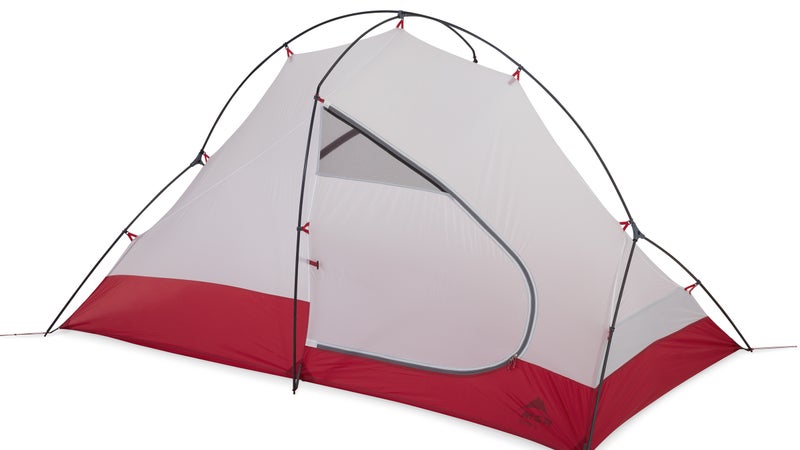
The , an �����ԹϺ��� Gear of the Year winner in 2017, was the first tent to use Easton’s Syclone poles. Made from a secret sauce of carbon and ballistic fibers originally developed for military armor, the poles are 13 percent stronger and 250 times more flexible than carbon alone��and about half the weight of aluminum. This makes for the ideal mix of weight savings��while still being able to shrug off snow and bounce back from hammering winds. MSR’s Breaux describes the Access as a weekend mountaineering tent, because it’s not as roomy as a typical expedition tent, which would usually have extra space for bulky winter gear. The interior is quite tall but narrow, with the two main poles crossing over the center. The two-person tent has 29 square feet of interior space—about the same as a Hubba Hubba—but four feet less than MSR’s mountaineering-specific . The weight savings are dramatic: the Access weighs a paltry 4.1��pounds versus��the two-person Hubba Hubba’s 3.9, while the burly Remote tips the scales at nearly seven pounds. The Access’s light weight, minimal pack size, and tough design make it the best option for longer trips or when packability is key. Just be prepared to fork out cash for the privilege of carrying less.
Big Agnes Copper Spur HV2 Expedition��($500)
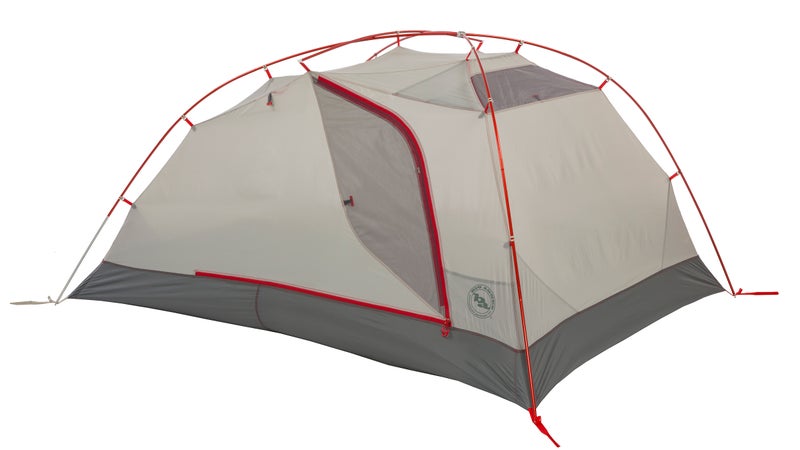
This ��was adapted��from the award-winning Copper Spur line of��three-season tents that includes everything from ultralight to high-volume designs. For the Expedition model, Big Agnes��took its higher-volume frame and added fabric walls, larger-diameter aluminum poles, interior guylines for stabilization, and easy-to-grip zipper pulls. The burlier features add up to 5.3��pounds compared to the lightest-weight 2.6��pounds and the three-season , which has similar dimensions at just over three pounds.
The HV architecture on the Expedition means the 29-square-foot floor area feels roomy. However, the tent’s not as good at sloughing off heavy snow loads or deflecting gusts of wind. This makes the Expedition a better choice for cold—but not snowy—locations.
This item is currently out of stock.��
Sierra Designs Convert 2��($500)
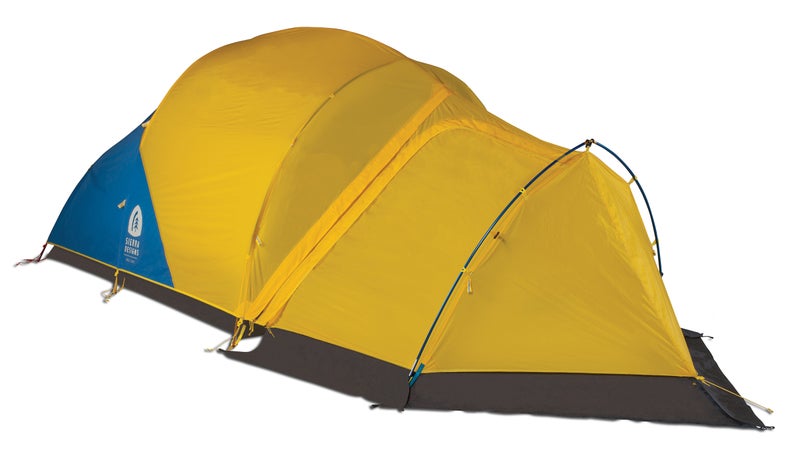
Sierra Designs��made�� to be a quiver of one. It has the stability to withstand wintry conditions and a solid poly fabric tent body to keep out the elements. At 5.6 pounds, it’s not light, but it’s reasonable enough to lug long distances, even in summer. And it’s pretty roomy: 30 square feet and 43 inches high. What sets it apart from the other four-season tents is its adaptability. Cut more than two pounds for rain-free summer trips by ditching the entire fly and vestibule; if you’re more risk averse, you can also zip off just the vestibule. Ramp up venting by zipping down the double-layer front door to expose the mesh.��Like the Copper Spur, the Convert is not the most rigid tent. The semi-freestanding design��(three hoops with a ridgepole)��necessitates careful staking, and it sagged under a foot of snow and bent in high winds. But for one tent in��all seasons and conditions, $500 is pretty compelling.
Nemo Kunai 2 ($500)
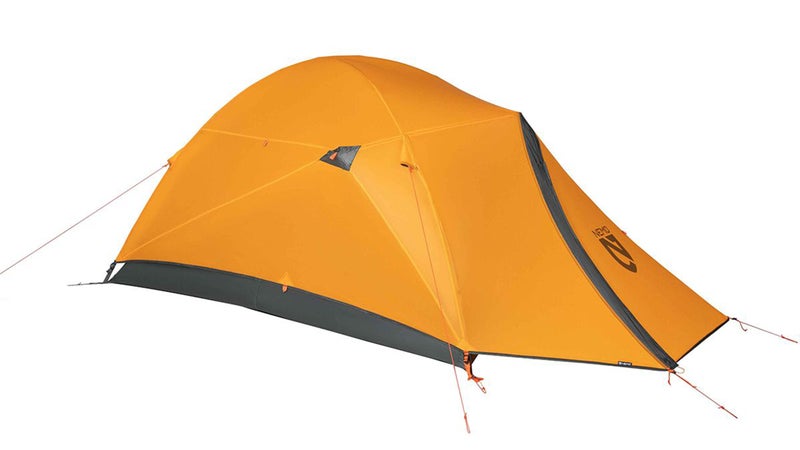
The ��was��already an��impressive entry in the four-season tent category before Nemo tinkered with it for 2020. The company��steepened��the profile, creating a more tapered shape that shakes off snow and slips through wind. The single door and vestibule are bigger, making them easier to maneuver through. And Nemo��increased the mesh surface area in the two windows and door. All three are double-walled—zip them down and the tent body goes from all fabric to mostly mesh.
The simple and quick-to-pitch pole architecture remains the same: two main poles and a cross pole over the door. Nemo says it’s designed to disperse loads vertically and horizontally across the entire tent. Four guy-out lines attached to the poles help with this. And sailcloth reinforcements in the fly and tent seams resist��tearing and wear better than typical nylon or polyester. It felt strong and stable in snow and wind.
The Kunai is the smallest of the four-season tents, at only 26 square feet. Steep walls help with elbow room, but it’s definitely cozy inside. The��plus side is that its compact shape makes pitching easier in places where��finding flat ground is tough. And��the abundance of mesh makes it the most summer-worthy. At 4.3 pounds, it’s a great choice for alpine climbers.
